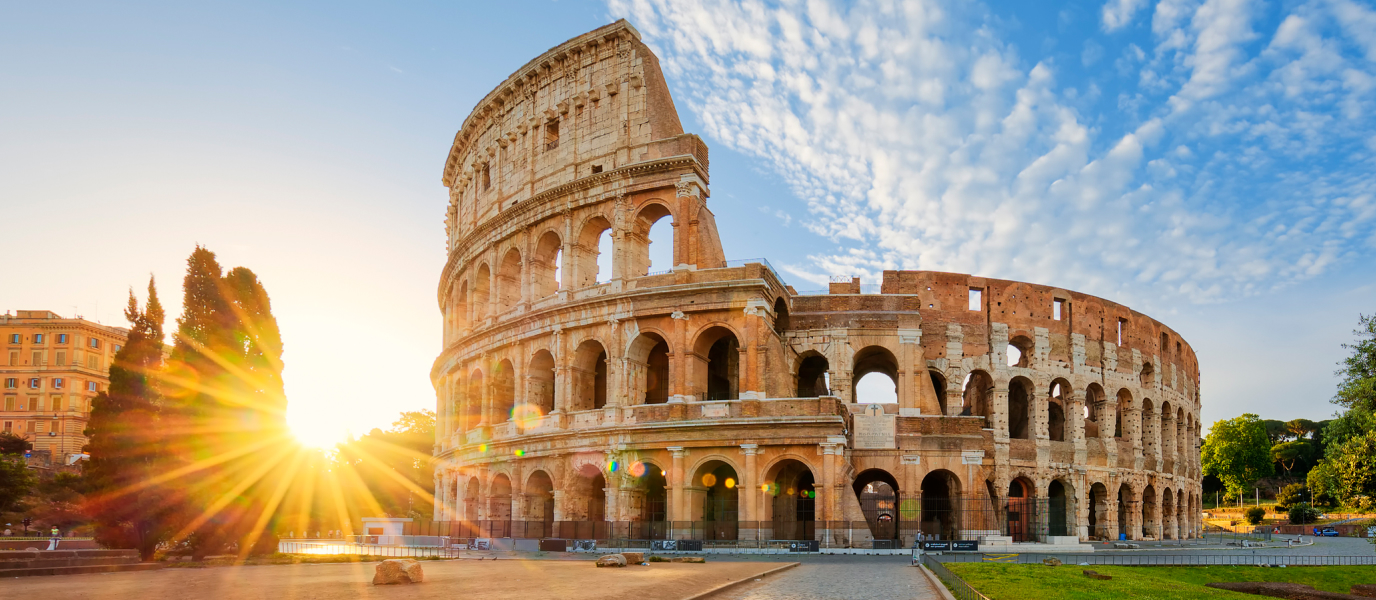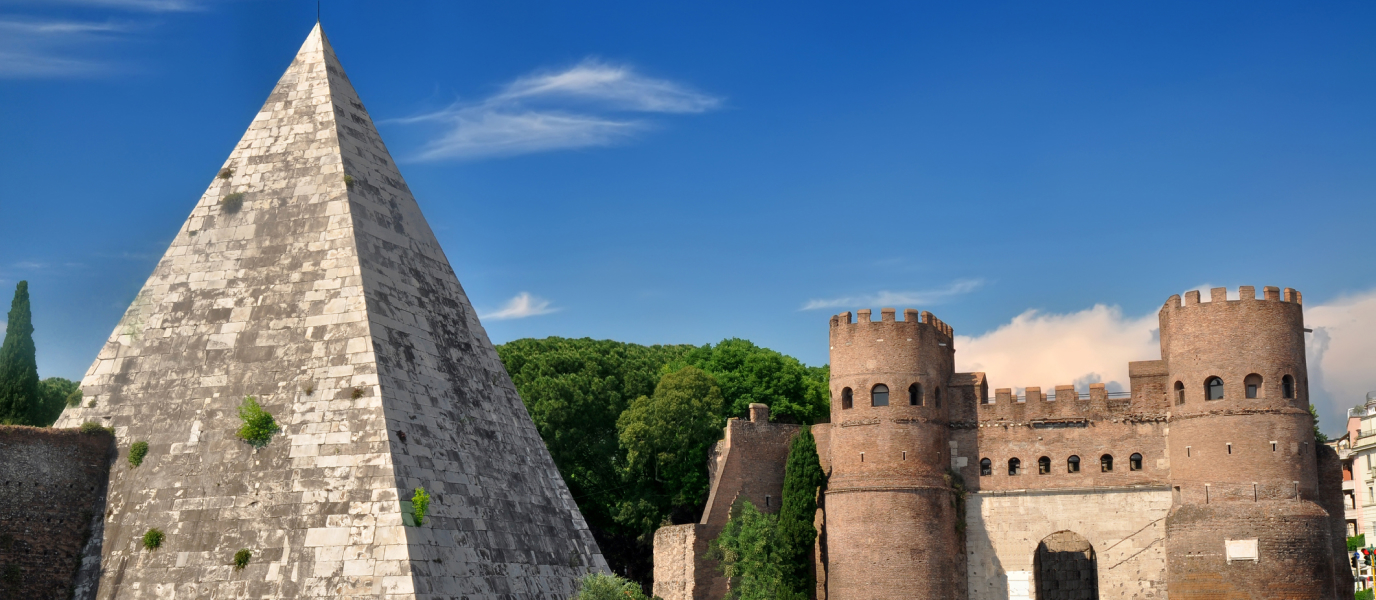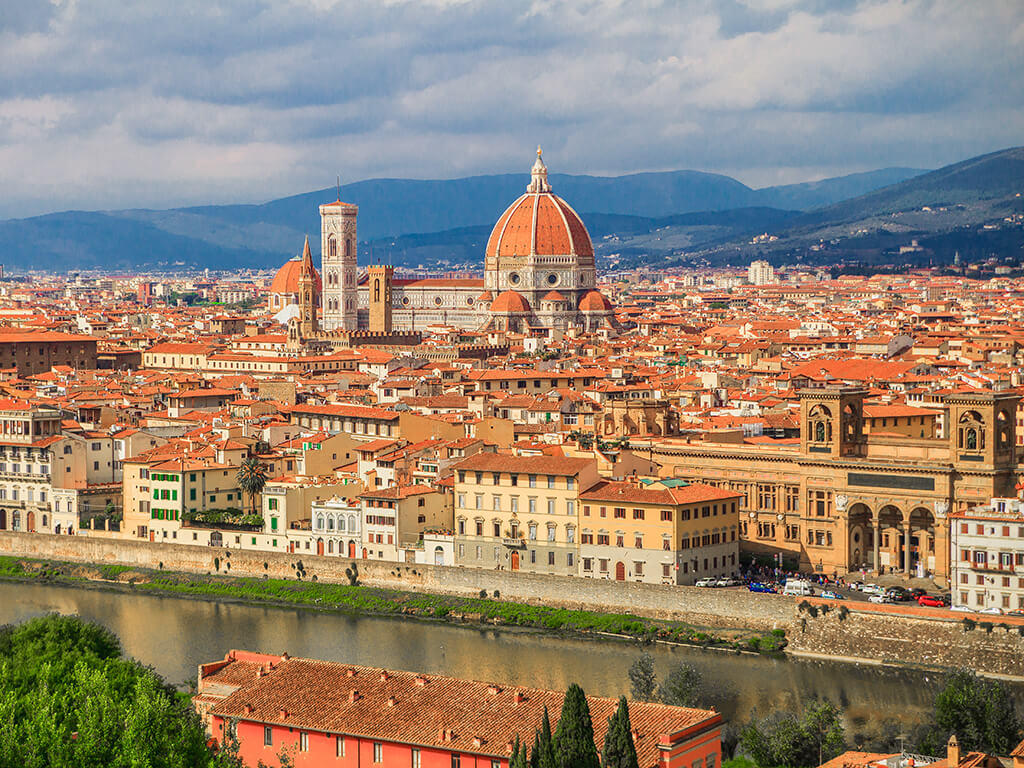Every year, countless pilgrims flock to Vatican City to worship in St Peter’s Basilica, the most important church in the Catholic faith. In Piazza San Pietro or St Peter’s Square, surrounded by vast semi-circular colonnades, worshippers are welcomed by the Vatican and taken into Christianity’s embrace.
In this huge oval space, Catholics from all over the world congregate to recite the Angelus, receive the Pope’s blessing on Sunday, attend large religious ceremonies and bid farewell to God’s representative on Earth when they eventually pass. It’s also where the faithful eagerly await the choice of a new pope as they watch for the white smoke emerging from the Sistine Chapel, and wait to hear first-hand the words ‘Habemus Papam’ before welcoming their new spiritual leader.
Designed in the 17th century by the great artist Gian Lorenzo Bernini, Piazza San Pietro continues to hold an important place in the Catholic faith. The square is one of the best examples of Counter-Reformation art in public spaces. Its monumental dimensions and beautiful symmetry can leave worshippers in awe. In short, this is Catholicism in its Sunday best.
History of Piazza San Pietro
Piazza San Pietro and St Peter’s Basilica were built where the ancient Circus of Nero once stood. It was here in the year 67 AD where Saint Peter, the first Pope of the Catholic Church, was crucified and became a martyr. Nero persecuted Rome’s Christians and accused them of having caused the fire that devastated the city in the year 64.
In 324 AD, Emperor Constantine ordered that a basilica in honour of St Peter be built over the necropolis housing the remains of the saint. The building which is now St Peter’s Basilica was constructed between the 16th and 17th centuries and was fully consecrated in 1626. There was one problem though: where to put all the pilgrims who flocked there from across the world. Pope Alexander II entrusted Bernini with the design of a piazza which was eventually built between 1656 and 1667.
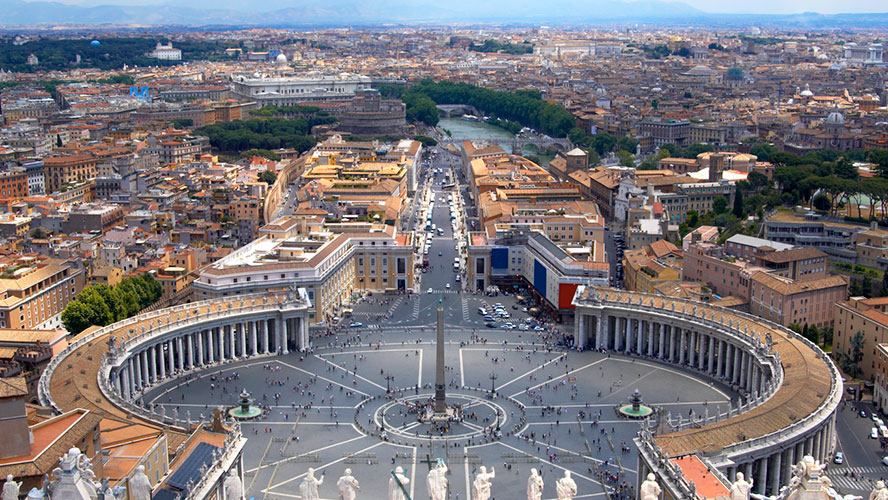
The Neapolitan architect and sculptor Gian Lorenzo Bernini (1598-1680) was the great artist of the Roman Baroque period and the genius behind several of the greatest monuments of the time, including the Fontana dei Quattro Fiumi in Piazza Navona, the baldachin, or ceremonial canopy, in St Peter’s, the church of Sant’Andrea al Quirinale, and the Ecstasy of Saint Teresa in the church of Santa Maria della Vittoria. The foreshortening, movement and expression of passions in his sculptures, and the element of surprise, monumental character, theatrics and curved lines in his architecture, are some of the reasons why Bernini is often considered the Michelangelo of the 17th century.
Architecture in Piazza San Pietro
Piazza San Pietro is a breathtaking 320 metres long by 240 metres wide and is a showcase of the Baroque period. The piazza was square shaped until the late 16th century, and Bernini later added two colonnades to create curves without closing off the piazza entirely. These two ‘open arms’ bring together the faithful and the Church in an embrace of fraternity and gradually tighten their hold to guide pilgrims towards the basilica. The two porticos have a total of 284 columns which are four rows deep and crowned with 140 statues. The rich details in the sculptures, such as the folds in the tunics, create a sense of movement which was an attempt to counteract the stiffness of the Doric columns below.
Vatican Obelisk
Like the Flaminio Obelisk in Piazza del Popolo, the Vatican Obelisk was carved from red Aswan granite from the ancient Egyptian city of Heliopolis. It may have been built around the 15th century BC. In 37 AD, Emperor Caligula brought this impressive 25-metre tall, 300-tonne structure to Rome to adorn one of the central strips in his private circus (later known as the Circus of Nero).
This is the only obelisk which has remained more or less in the same place since it was taken to Rome more than 2,000 years ago. It’s also called the ‘mute witness’ in an allusion to the martyrdom of St. Peter next to the monument. It was moved to its current location in 1585 and in 1818 its base was adorned with lion sculptures.
Fountains in Piazza San Pietro
The twin fountains of Piazza San Pietro stand at either side of the square in line with the obelisk. The one to the north was designed by Maderno in 1501 and moved to its current location in 1667 to create the symmetry so revered by Bernini. Ten years later, Bernini created the twin fountain at the other end of the square.
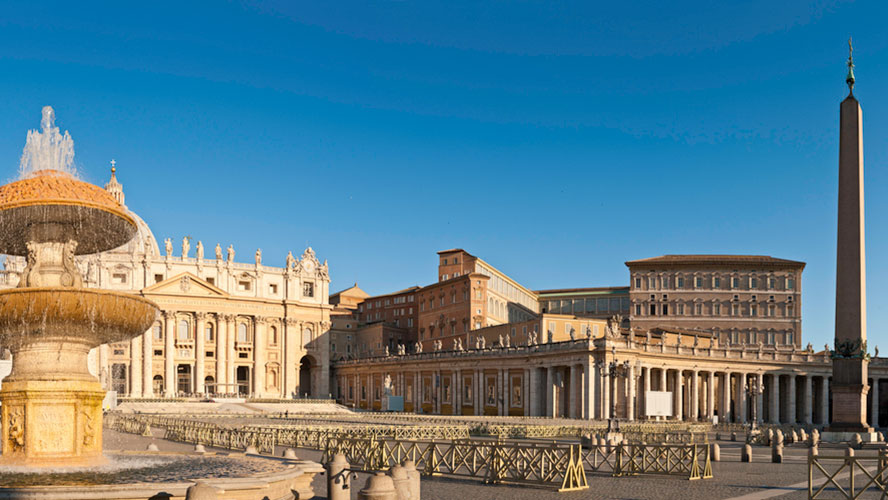
Fun facts about Piazza San Pietro
The piazza has some interesting features which often go unnoticed.
Disappearing-reappearing column
Two discs on the floor of the piazza between the obelisk and each fountain mark the point where three rows of columns disappear from view, owing to an optical illusion.
The remains of Julius Caesar
Before being placed in its current location, the Vatican Obelisk was crowned by an imperial eagle and a sphere. In Medieval times, the remains of Julius Caesar were said to lie there, but when Pope Sixtus V replaced the eagle and sphere with a cross, nothing was found. In 1740, a cavity was opened in the top part of the cross to house some vestiges from the cross of Christ.
The obelisk and the solstices
A compass rose and a meridian were installed in the floor of the piazza in 1817. The shadow of the obelisk marks the signs of the zodiac at noon and the summer and winter solstices when the shadow covers the two discs at either side.
Removing the element of surprise
Despite its astounding size, the piazza was designed to be stumbled upon almost by accident, since access was via a network of small streets. The vast axis created by Via della Conciliazione, built during the Mussolini dictatorship, soon removed the element of surprise.




































































